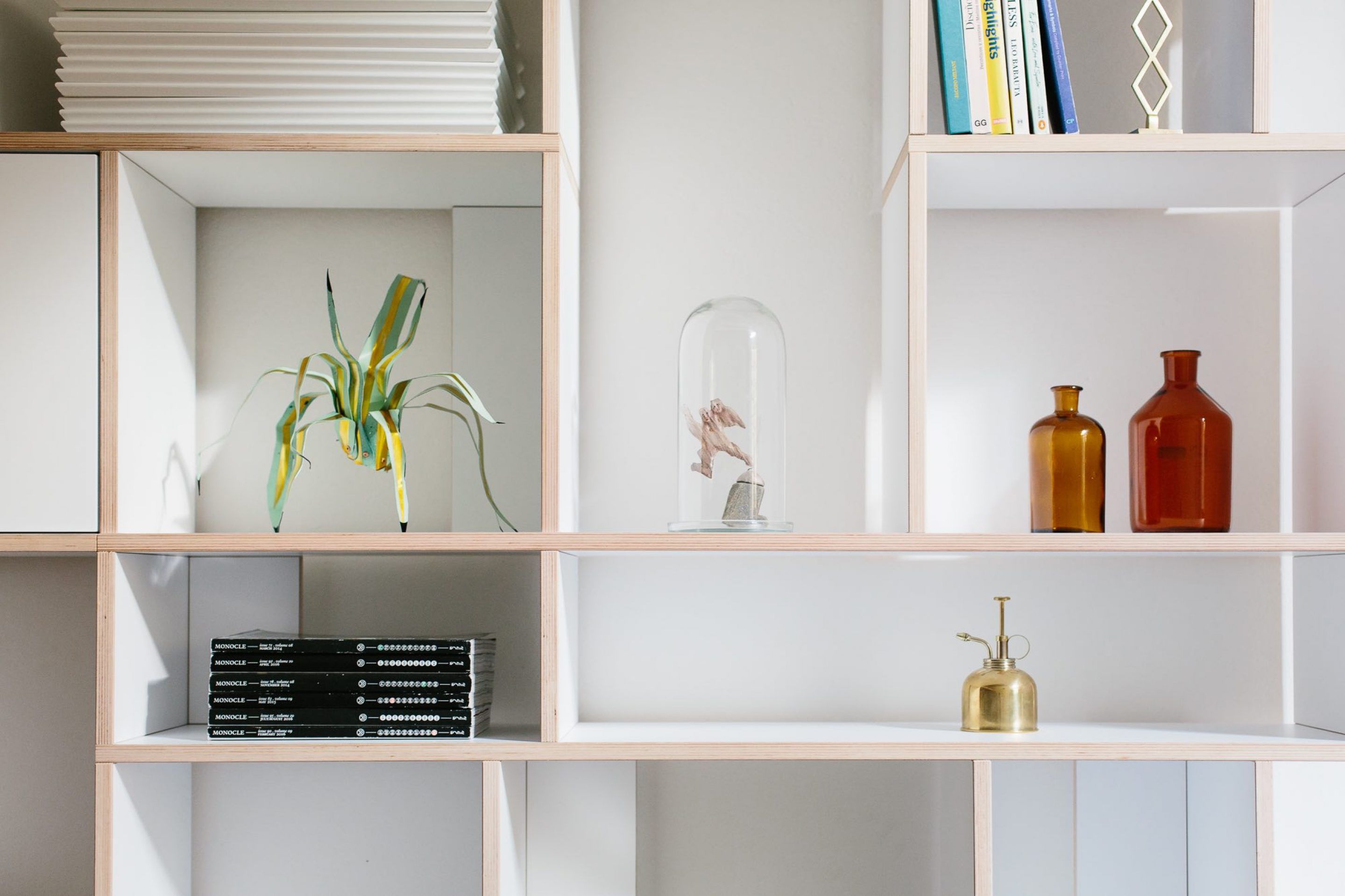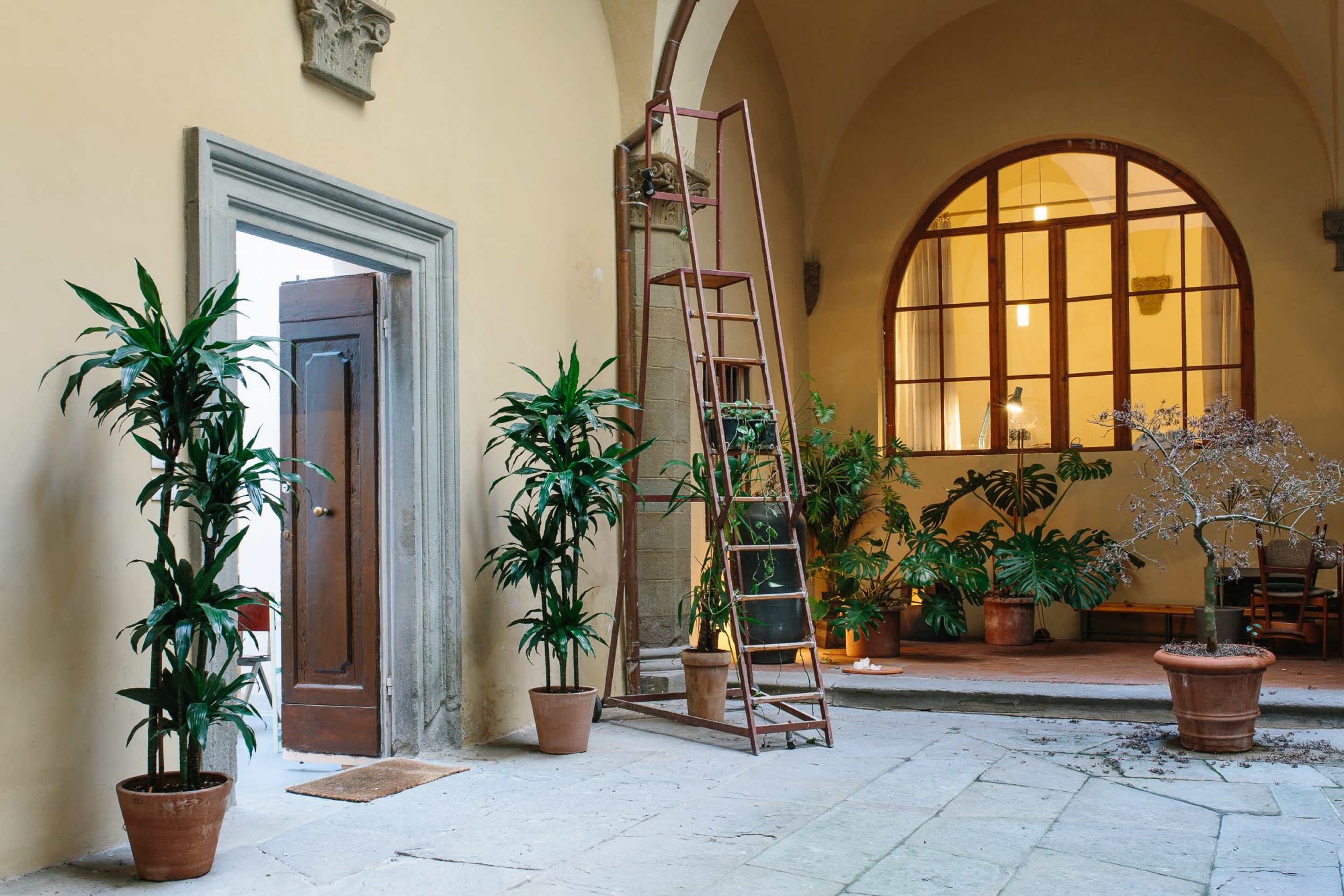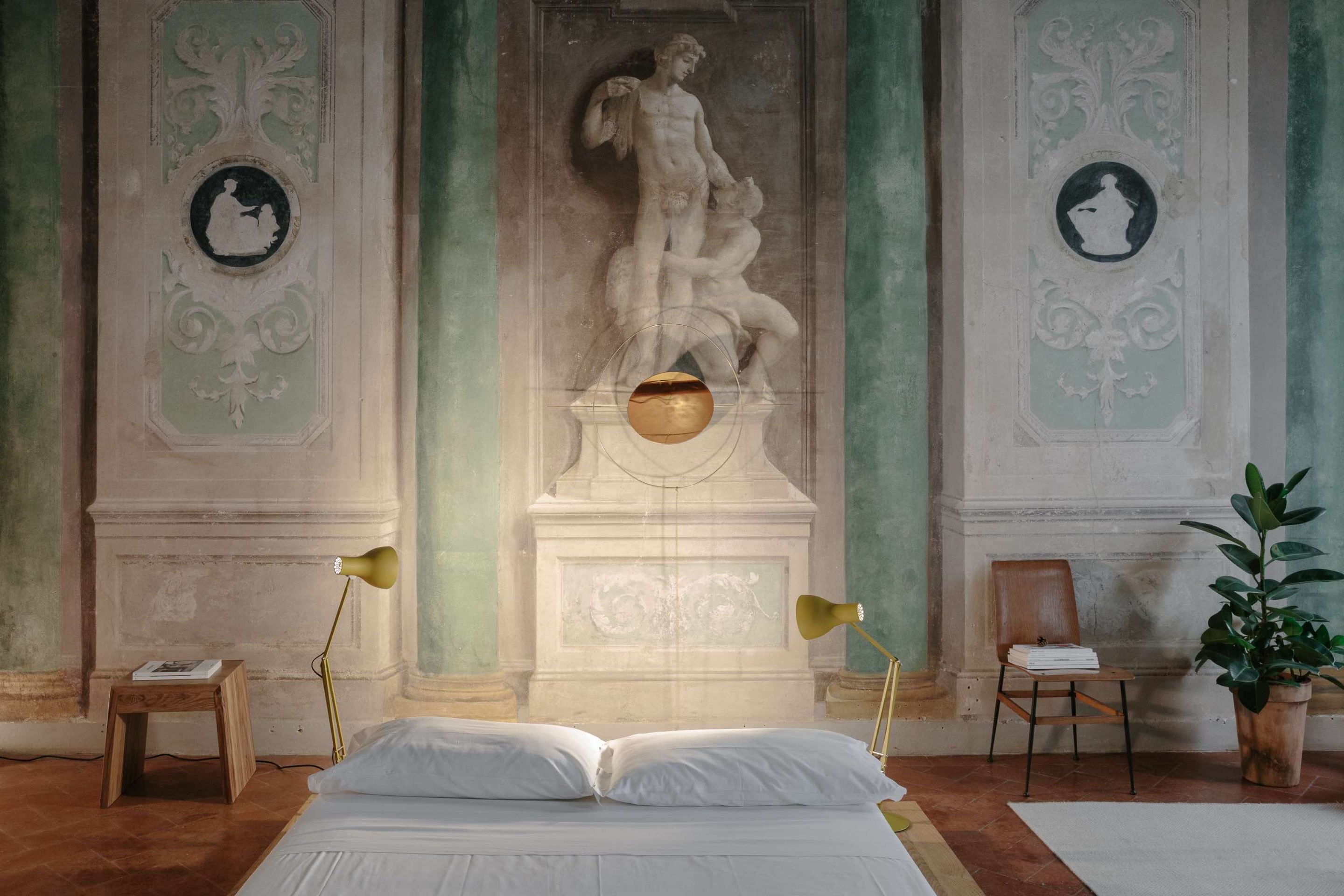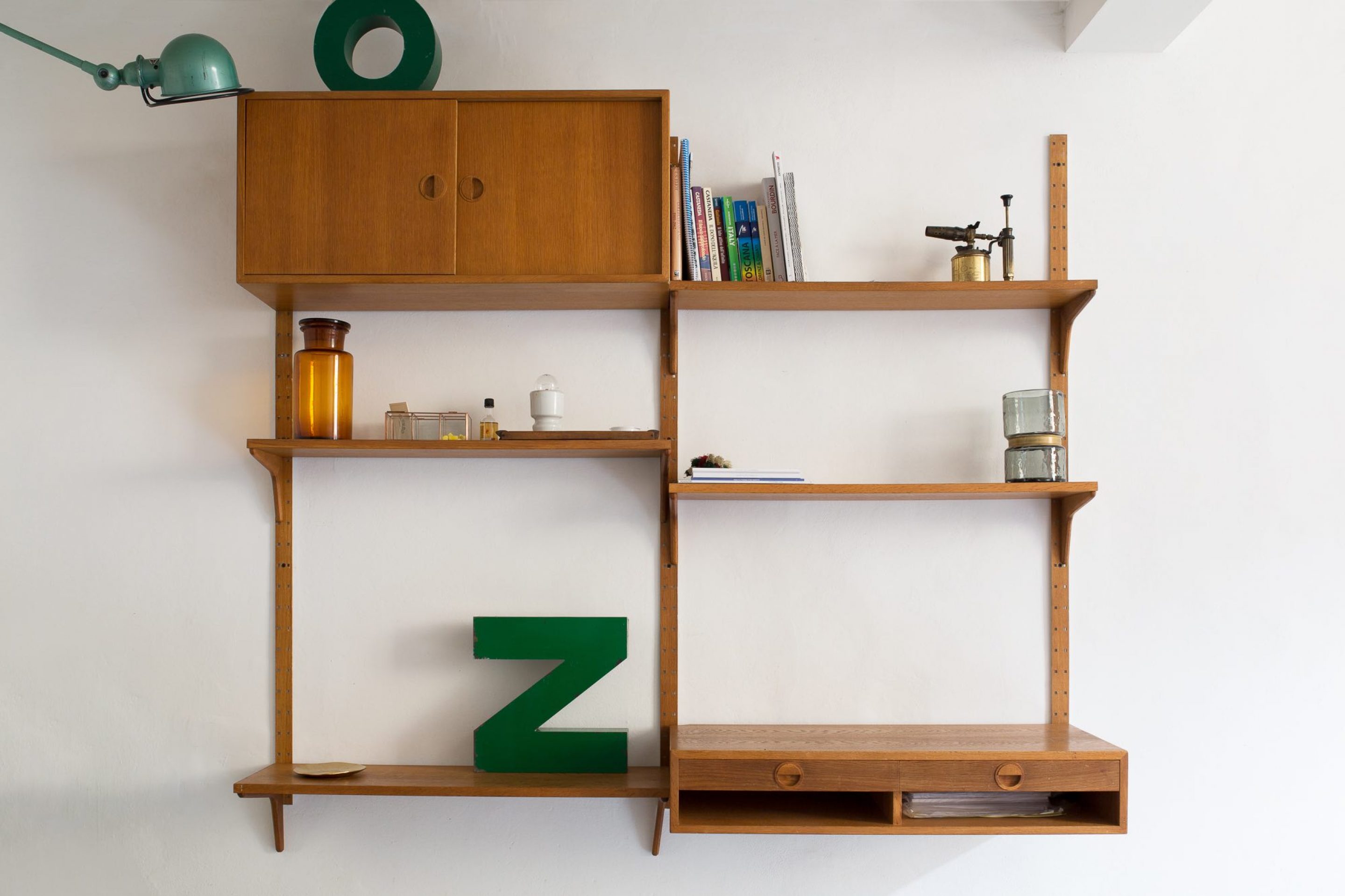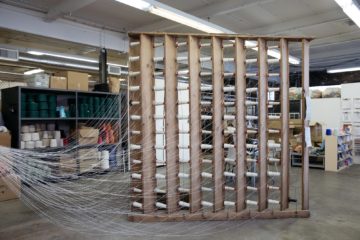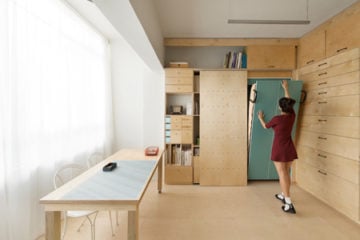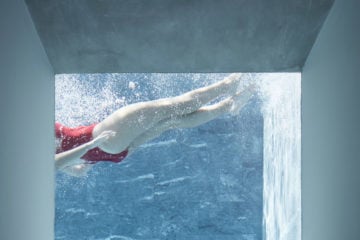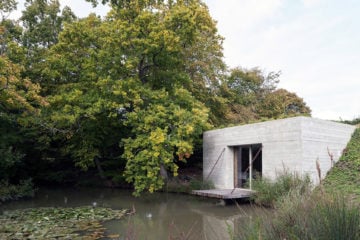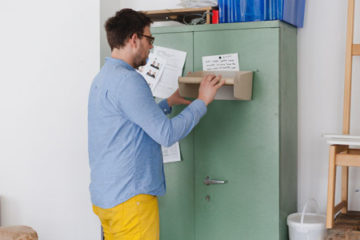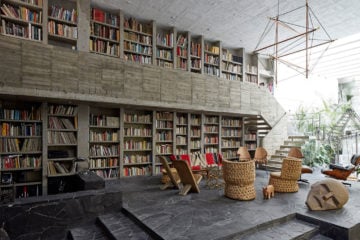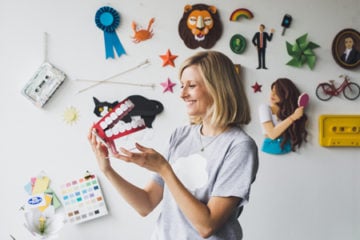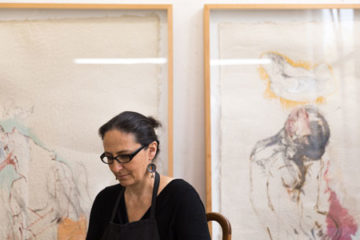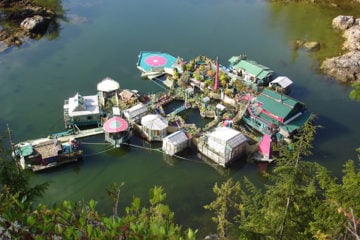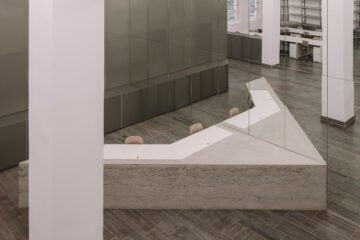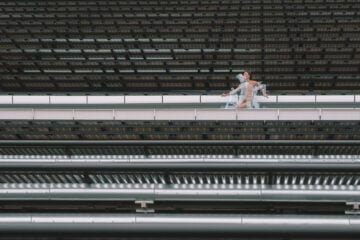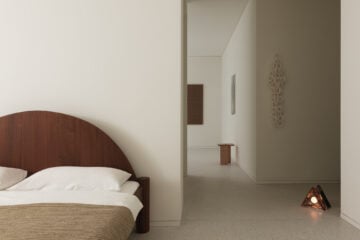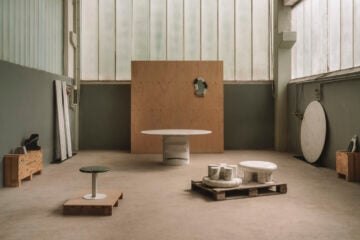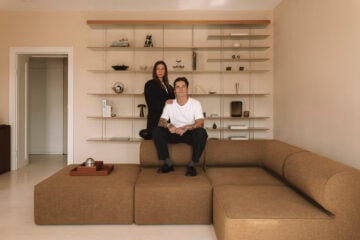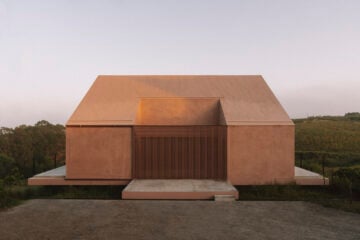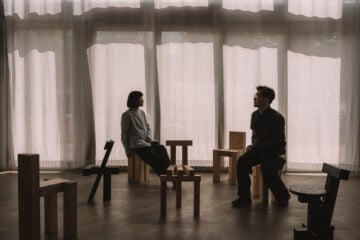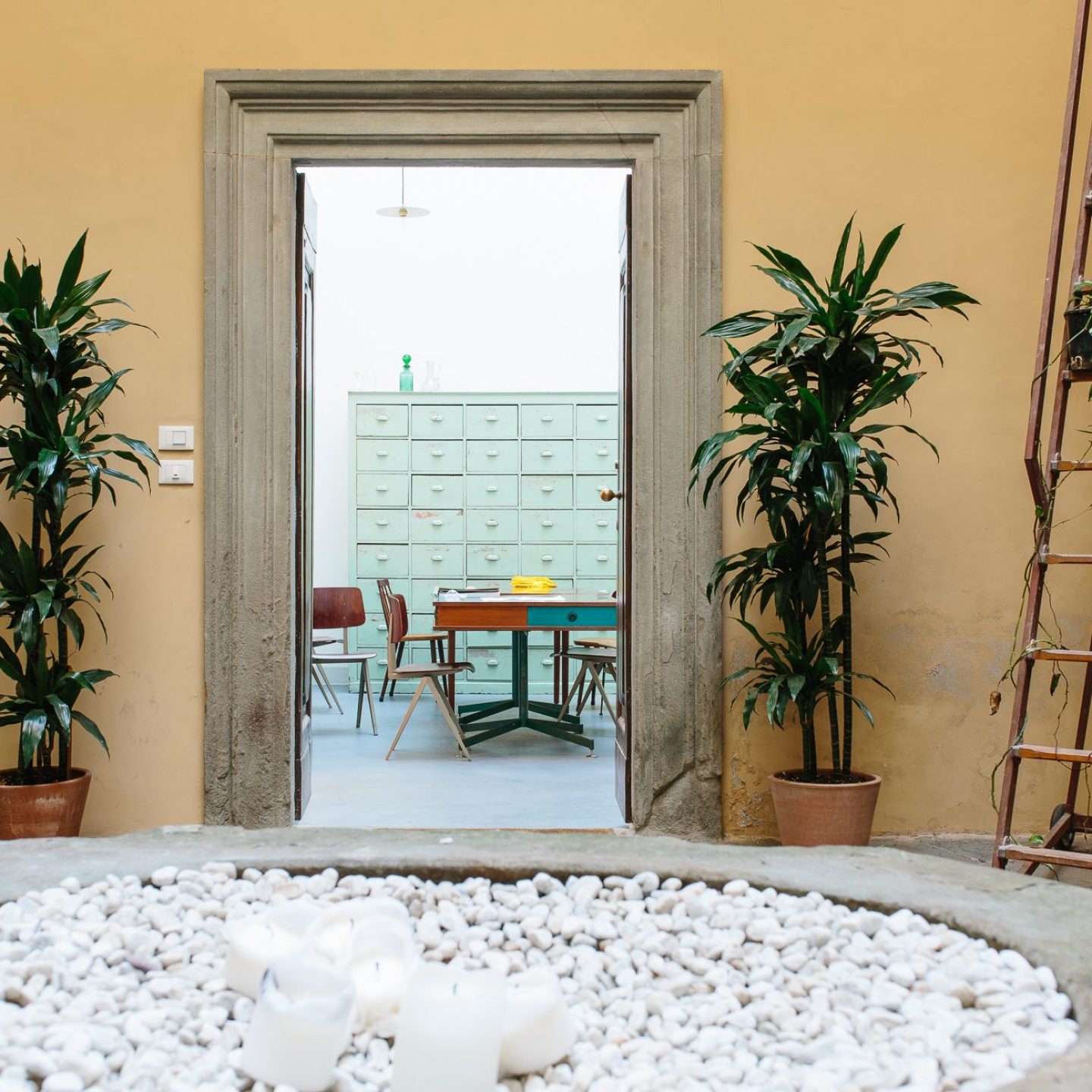
Martino Di Napoli Rampolla On Designing A New Retreat For Nomadic Creatives
- Name
- Martino di Napoli Rampolla
- Project
- Numeroventi
- Images
- Birgitte Brøndsted
- Words
- Anna Sinofzik
Martino di Napoli Rampolla has a clear vision of the interplay between creative processes and the spatial conditions that promote them: Most importantly, he argues, both need to welcome change and allow for ideas to flow.
In 2016, Martino founded Numeroventi, a multipurpose hub for hosting artists, designers, exhibitions, and events. Housed in a historical Florentine Palazzo with ceilings high enough for downright flash floods of ideas to flow through, the project unfolded gradually, like a living organism. Combining stuccoed architecture with modular Scandinavian furniture, the space is designed to remain flexible for situations to come. As part of our collaboration with furniture design company Tylko, we talked to Martino about the dynamics of communal shelving systems, his personal work-life balance, and the way in which Numeroventi unites the New Nomads’ urge to stay mobile with the deep-seated desire for a stately place to call home.
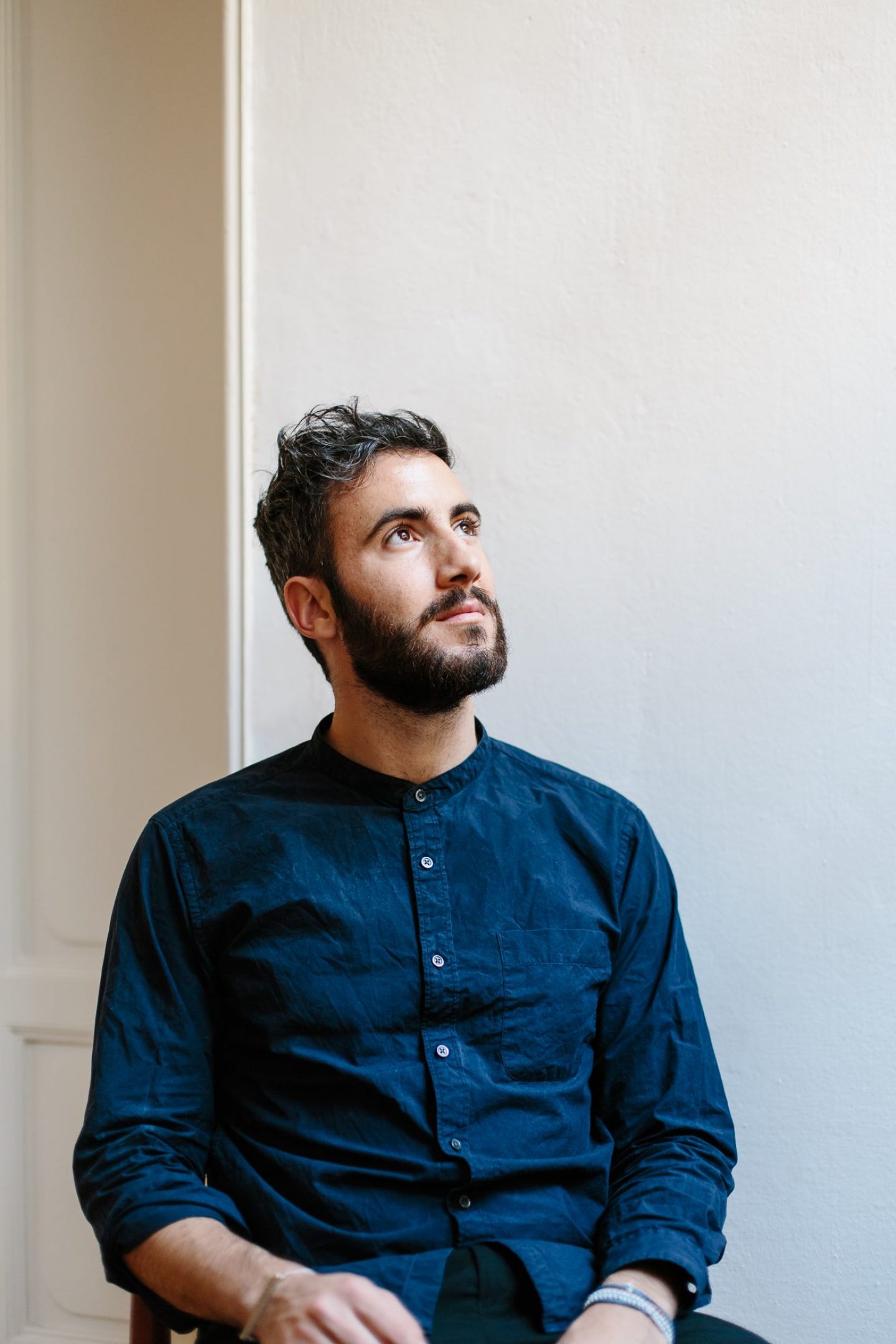
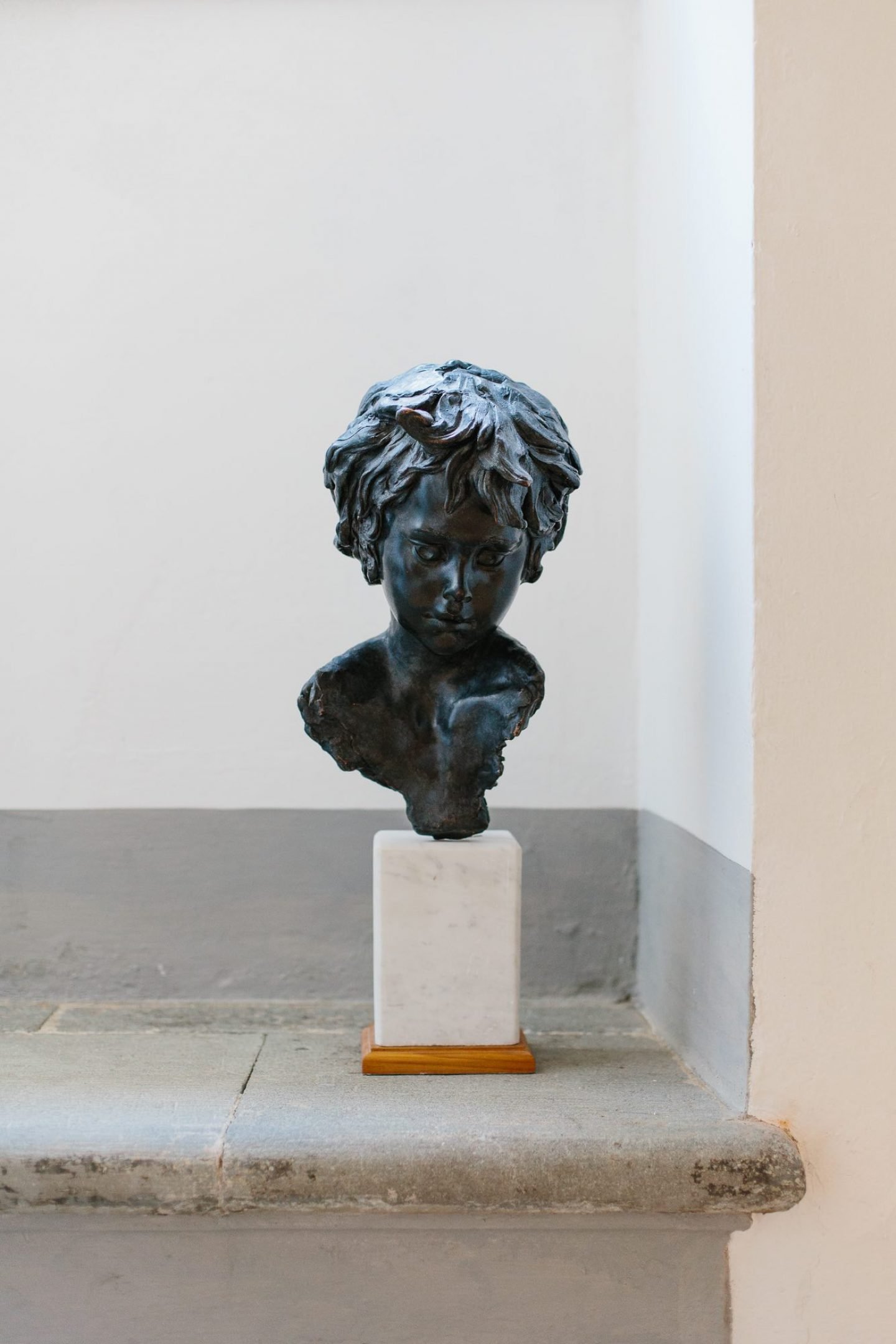
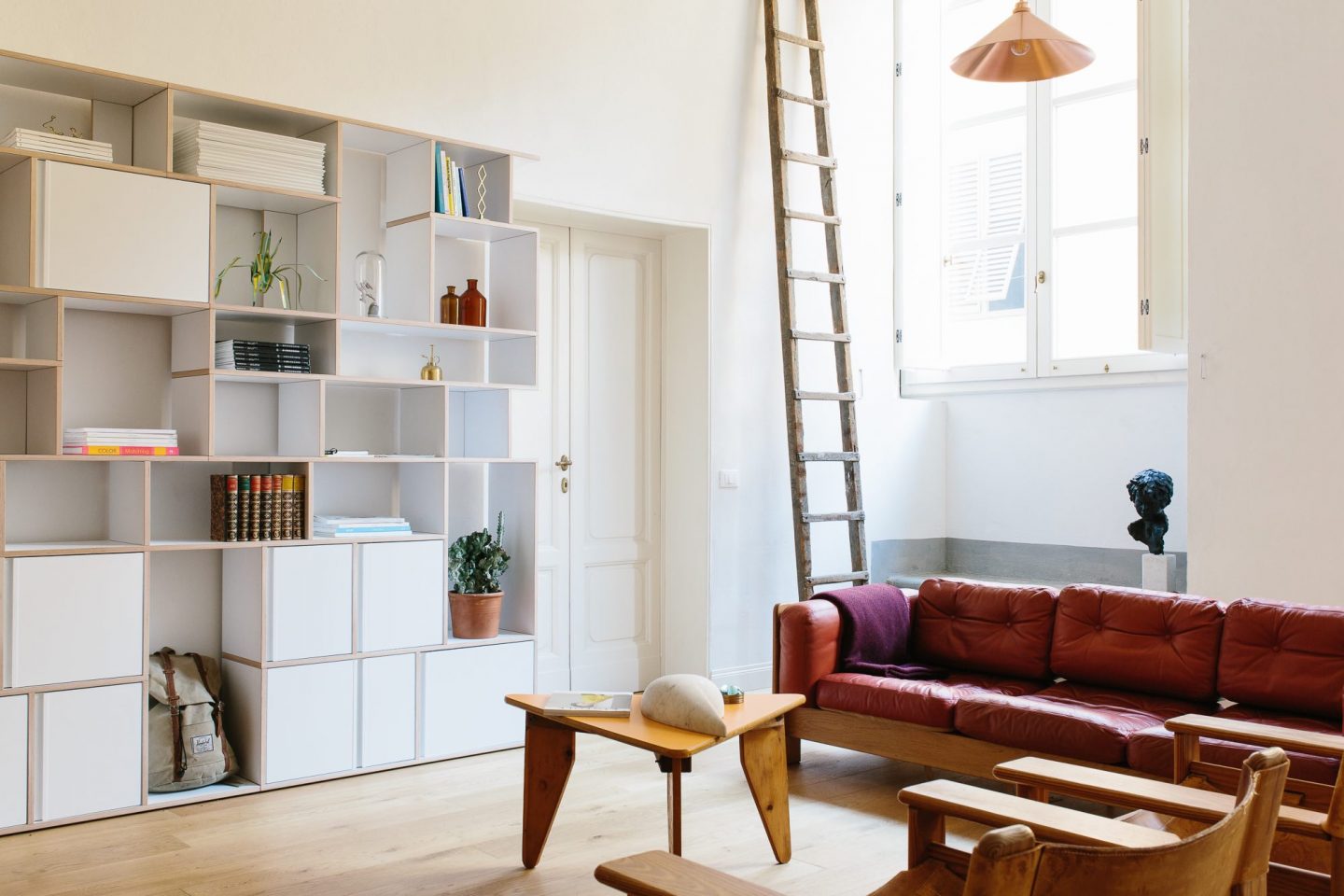
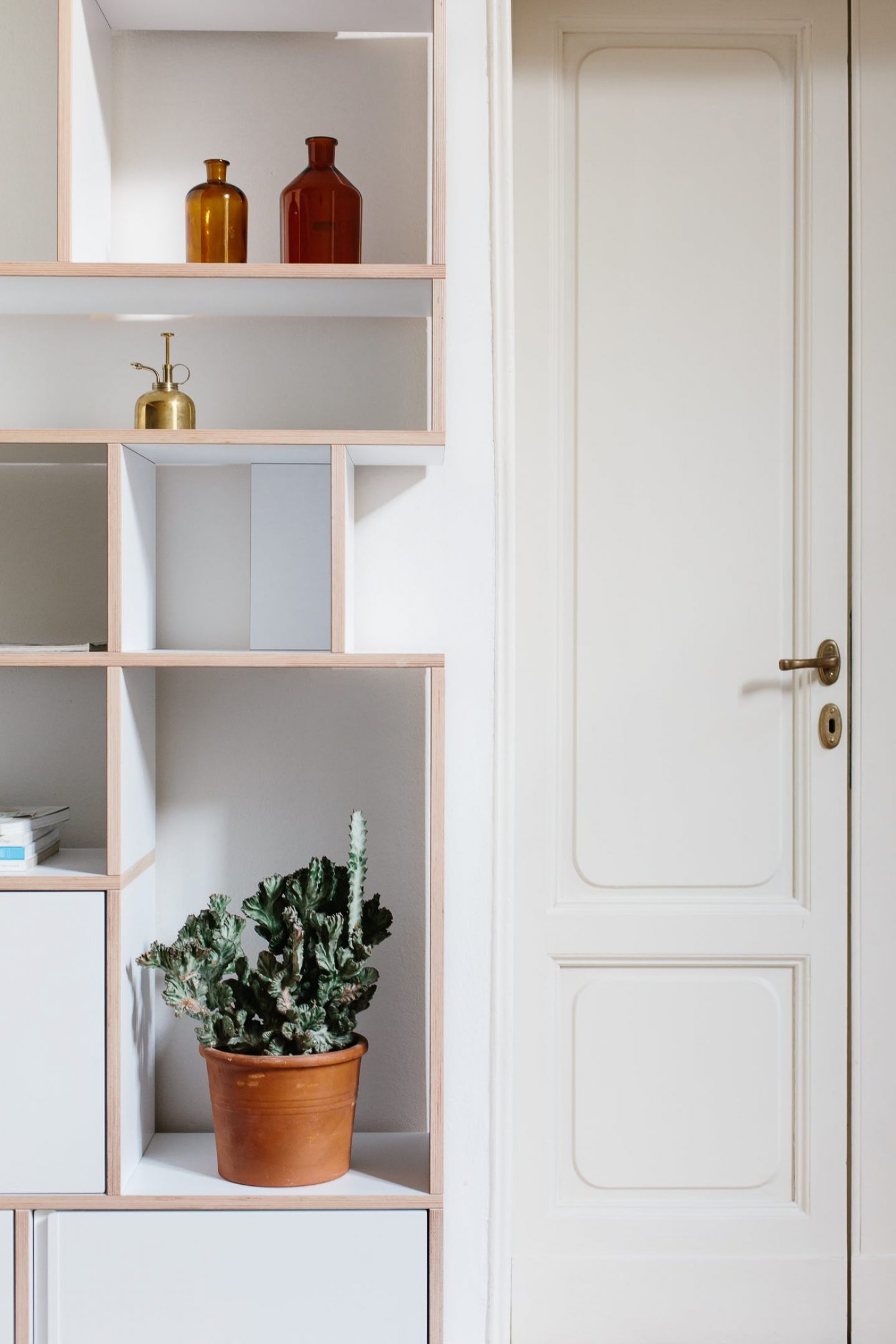
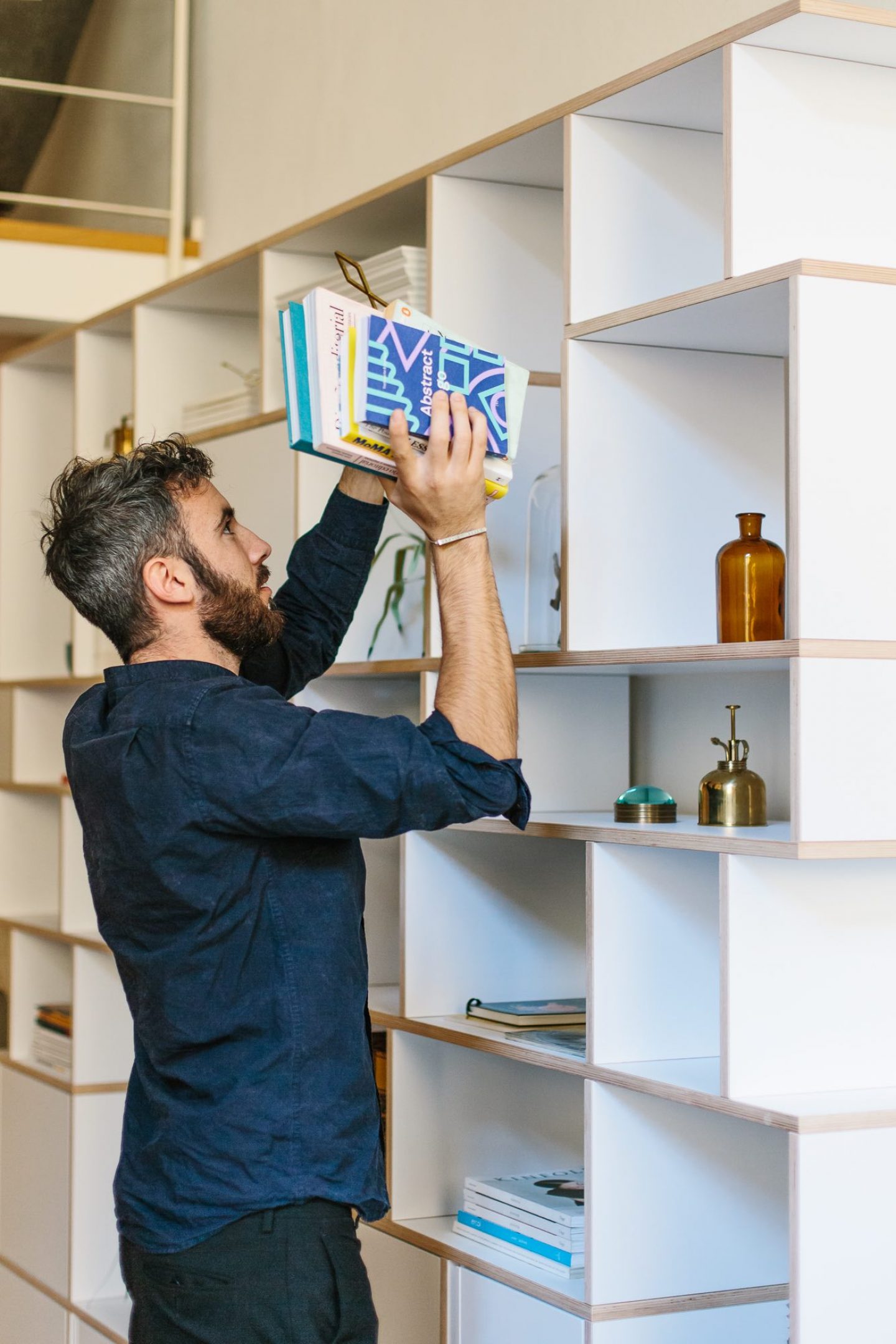
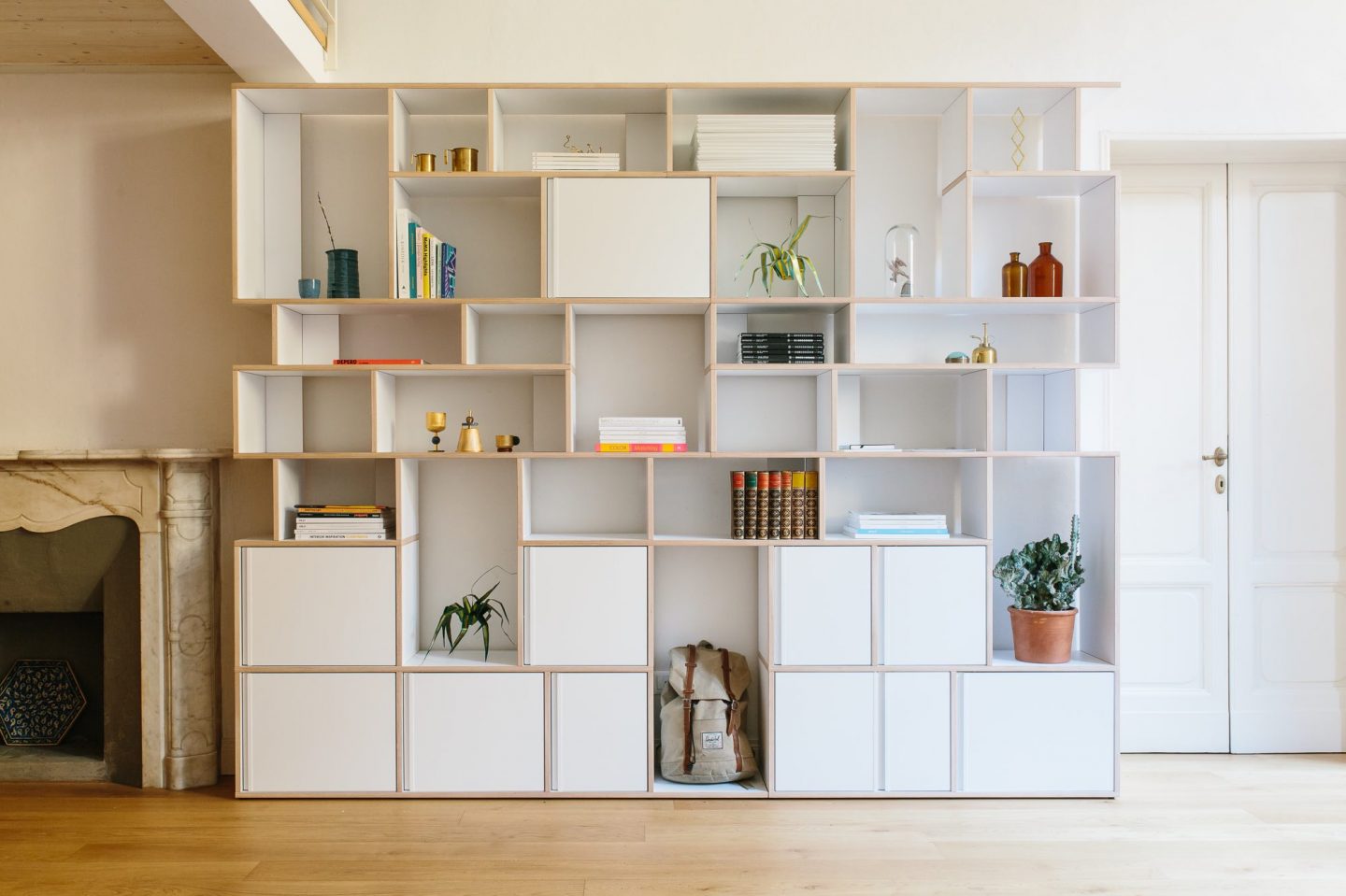
Images © Birgitte Brøndsted for iGNANT Production
Martino, you’re a graphic designer by education. With Numeroventi you now foster creative exchange and support the creative output of others. What made you change focus?
You can call it a change of focus, but it actually rather feels like a natural progression, a good step forward, to me. Numeroventi is a lot about communicationand as the project’s creative director, I still design all its visual output. Of course, running a space like this also involves a lot of other responsibilities, including things that I haven’t been doing before, but I really enjoy that. I’m a social and practical person, so in the long term, doing graphic design alone wouldn’t have been satisfactory. It means being by yourself most of time,facing a screen. At Numeroventi, I constantly interact with others, like particularly closely with Alessandro Modestino Ricciardelli, who acts as a project manager. And I get to work with my hands a lot. We are currently building a wood workshop, for example. And in terms of furniture and fittings, the space will probably never be finished. In a way, interior design feels closer to life, compared to visual communications. I guess that’s what makes it so fulfilling to me. Then again, my approach to designing spaces is strongly informed by what I learned doing graphics. So it really all connects. Finally, I can combine all of these different interests I have. And instead of designing for clients, all my work feeds into my own project now.
"The core idea is to invite artists and designers from all over the world and develop interdisciplinary collections together."
Can you tell us a bit about the concept behind the Numeroventi?
The core idea is to invite artists and designers from all over the world and develop interdisciplinary collections together. Basically, it is all motivated by a problem that is quite common in the contemporary creative industry: Most creative people start out doing what they do because they are passionate it, but then, after a few years of professional practice, they often find themselves doing something entirely different. Because once there is success, they have employees and get caught up in processes that aren’t creative at all. There’s a lot of stress, there are deadlines, organizational matters… Numeroventi aims to act as a retreat, as a place where creatives can rediscover the core of their profession. It invites them to break out from routines and be inspired; by other people, by the space—actually, in many different ways. Of course, every individual comes here with different needs and expectations, but they all seek the possibility to recharge creatively. Many also value the invigorating vibe of the city: Florence, which happens to be my hometown, has become some sort of hotbed, a lot of people come here to restart. Perhaps it’s the spirit of Renaissance, which is exuded by the old heritage buildings. It is all quite quaint and archaic—but at the same time very vibrant. That said, I actually consider Numeroventi as part of a broader process, which is also why the concept is in constant flux. Actually, all I knew when I started the space was that I wanted to offer creative people a place to collaborate. Now we are hosting proper artist residence programs, a variety of events and exhibitions, and we even rent out apartments. It all developed rather dynamically. Having realized the potential of the space, I rented more apartments in the building, we extended and transformed it all bit by bit. There was one floor at first, now we have three.
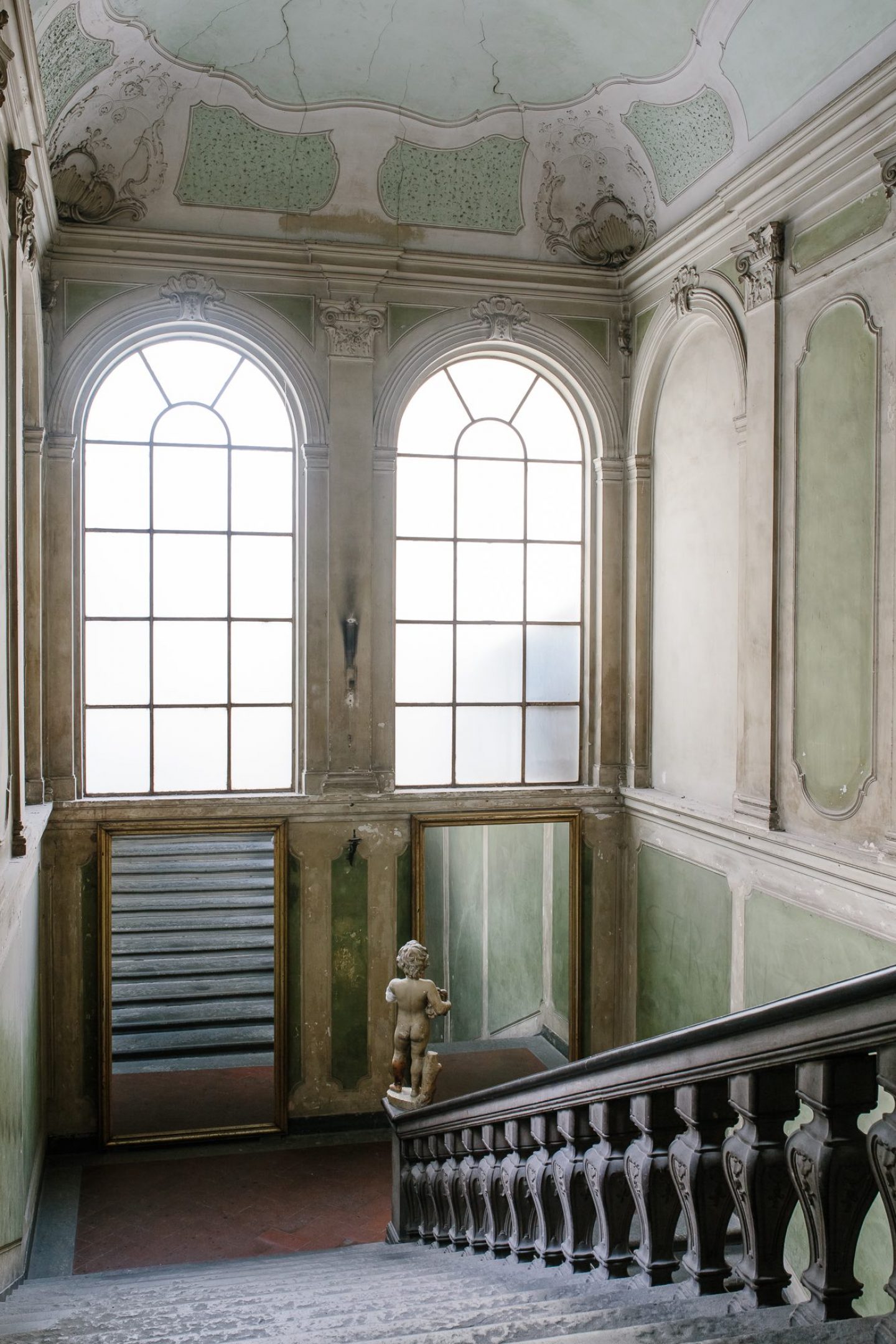
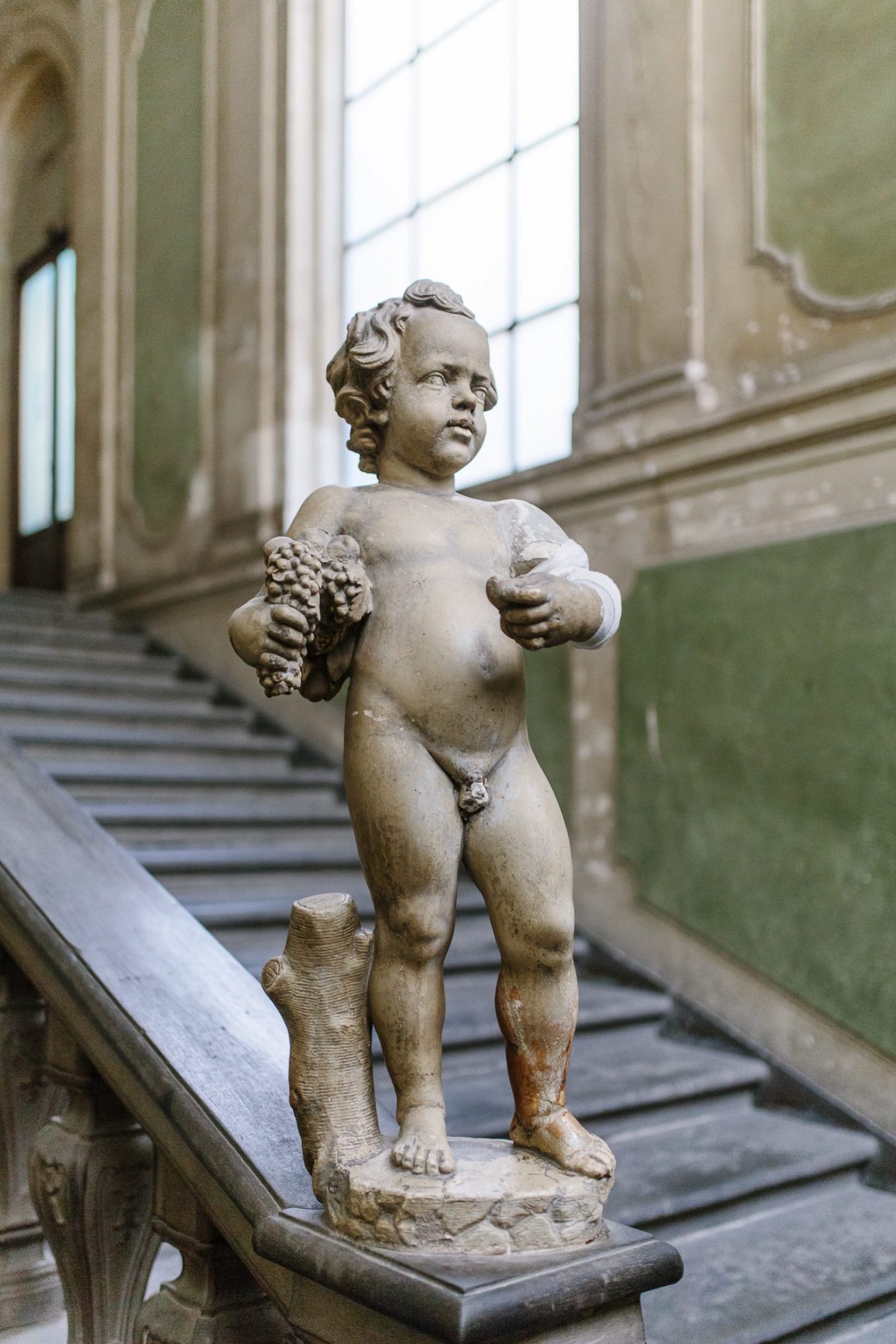
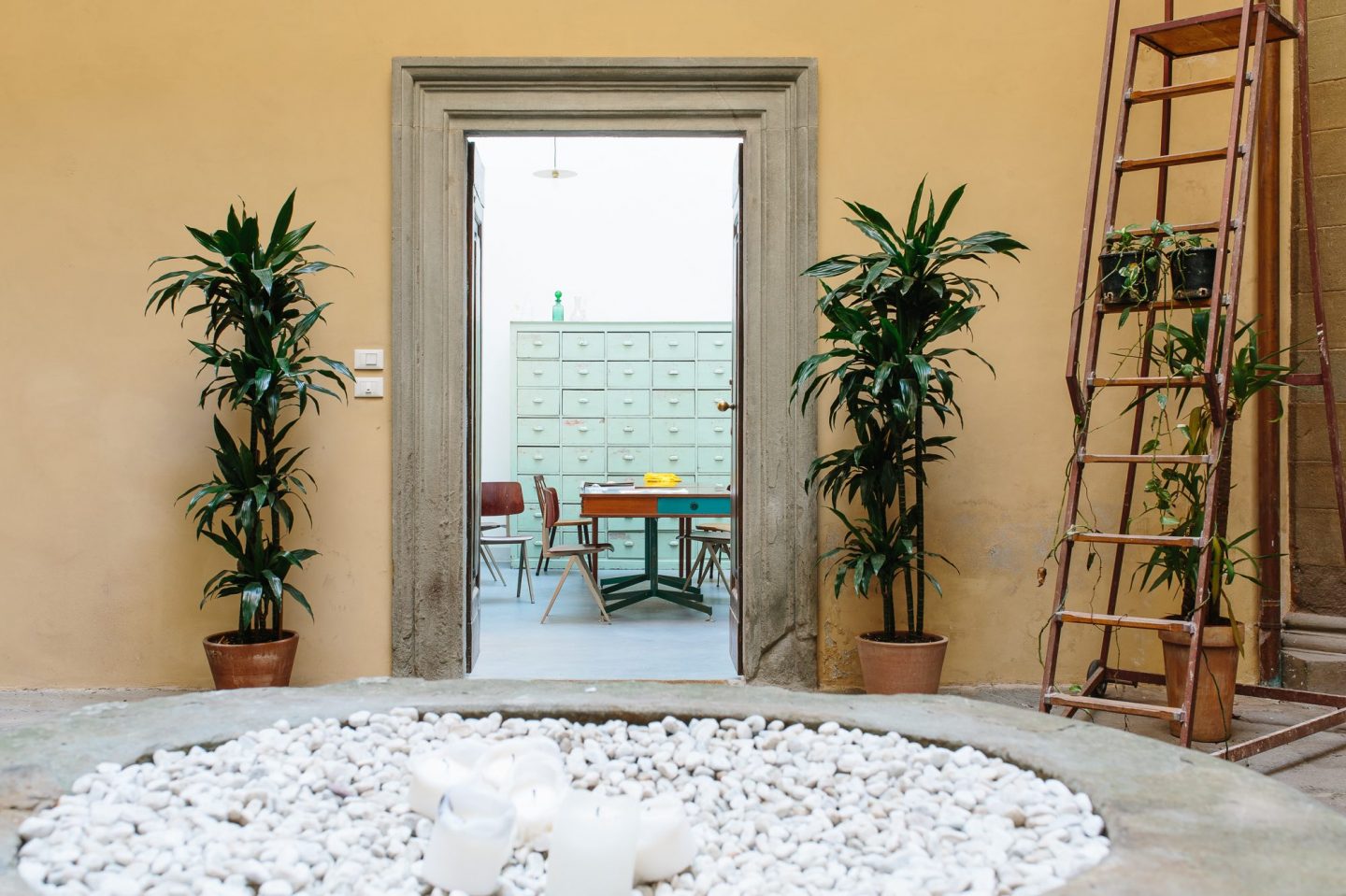
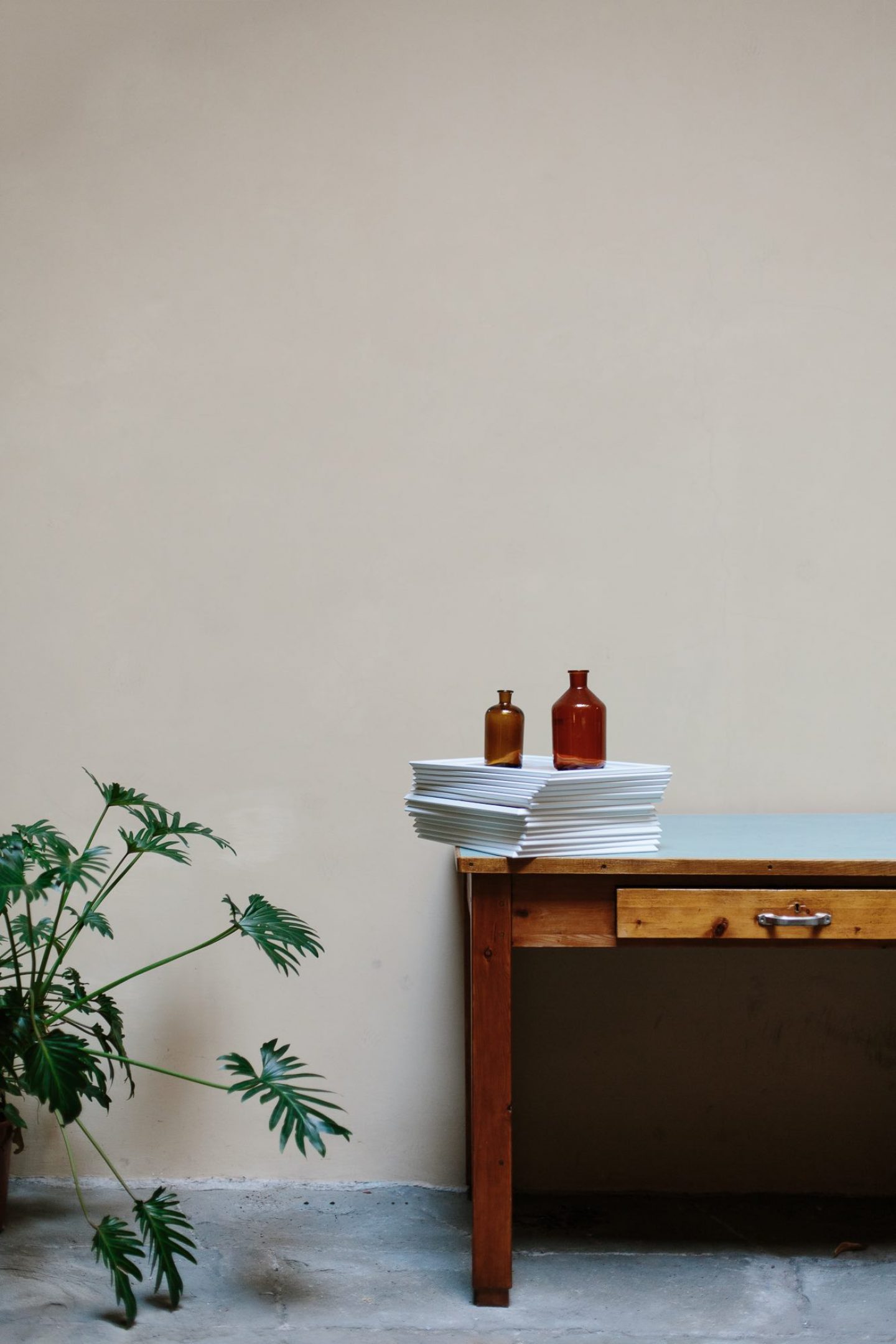
Images © Birgitte Brøndsted for iGNANT Production
How have you found this splendid location?
I had the luck that one apartment in the building belonged to my grandmother. She lived there when she was young, and I’ve been there as a teenager, which made the process of transformation even more exciting for me. It’s funny but in my memories, it isn’t a nice house at all. It is huge, old, entrenched in history, and has that dark, oppressive atmosphere, a sense of heaviness, to it. After my grandmother, an old lady lived in the apartment for a long time. I first moved in when I started to study. The building was really rundown at that point. And although I appreciated the spaciousness and beauty of it, it still didn’t feel like a space for ideas to flow.
What have you done to make it more inviting?
My approach was, first of all, driven by the search for light. It started with very simple things, like painting all the walls white. In Florence, interior walls are traditionally yellow, but I really felt the need to brighten things up and the result was impressive. The rest was pretty much a process of learning by doing. I had already worked on the interior design of a bar back when I was working in Barcelona, but all in all, I had little experience or interior design skills. Only more generally, a good sense of aesthetics I guess. Over time, I found out that there are some basic rules to follow. And how important it is to create contrasts. We have just put these two yellow benches in the courtyard, for example, which clash with the old statues and stuccoed arcs. But then again, they bring a sense of lightness and fun into the somewhat serious setting. It’s impressive how old and new elements can both break and balance each other. More generally, the process of designing interiors works best for me if I begin with the details, with little things, like a particular lamp to be put next to the bed. That way, the bigger picture unfolds naturally. The process is more interesting and results are better, too. Or at least, there’s less risk that things will look random. Because every choice is based on a personal decision, and each decision motivated by another.
Compared to most artist studios and workplaces I know, Numeroventi looks incredibly neat. It’s elaborately furnished, artfully decorated, luxurious. To be honest, it rather appears to be the perfect place to call the room service and relax, than one to get your hands dirty. What makes it a good place to work?
It has a very special energy. I guess it that goes back to what I just said, that it was not designed as a whole, but really developed gradually. Looking at the furniture, for example, we have collected pieces from all over the world. I found a lot of things during my travels, others online. Every object has its own story and evokes certain emotions. Of course, the brightness of the place plays a central role, too. Thanks to all the white walls, large windows, and through taking some walls out altogether, we managed to create incredible light conditions, which is obviously a particularly important aspect for artists. Then there’s the mere variety of spaces that can be used in various ways—like the top floor, which can be used for exhibitions but also makes an incredible studio. All in all, we leave a lot of freedom to the artists, so there is a very liberal atmosphere. Another important thing is that artists find themselves in a place where other people have worked here before them. It may look rather tidy, but all individuals are leaving their traces. That gives people the sense of being part of something bigger, which is really motivating. It reminds you that you are contributing to some sort of common, creative “project”; that there are others like you.
How is the sense of community reflected in the space and the objects that you chose to furnish it with?
Well, first of all, we took out a few walls to allow for communal areas. The white walls also do their bit, as they make the space feel more open. In terms of objects, the sense of community is probably best reflected in the crazy amounts of chairs that we have here. It became some sort of mantra: “Martino, you need chairs. Chairs and large tables.” That, to me, is the epitome of community and comfort. And eventually, also of creativity.
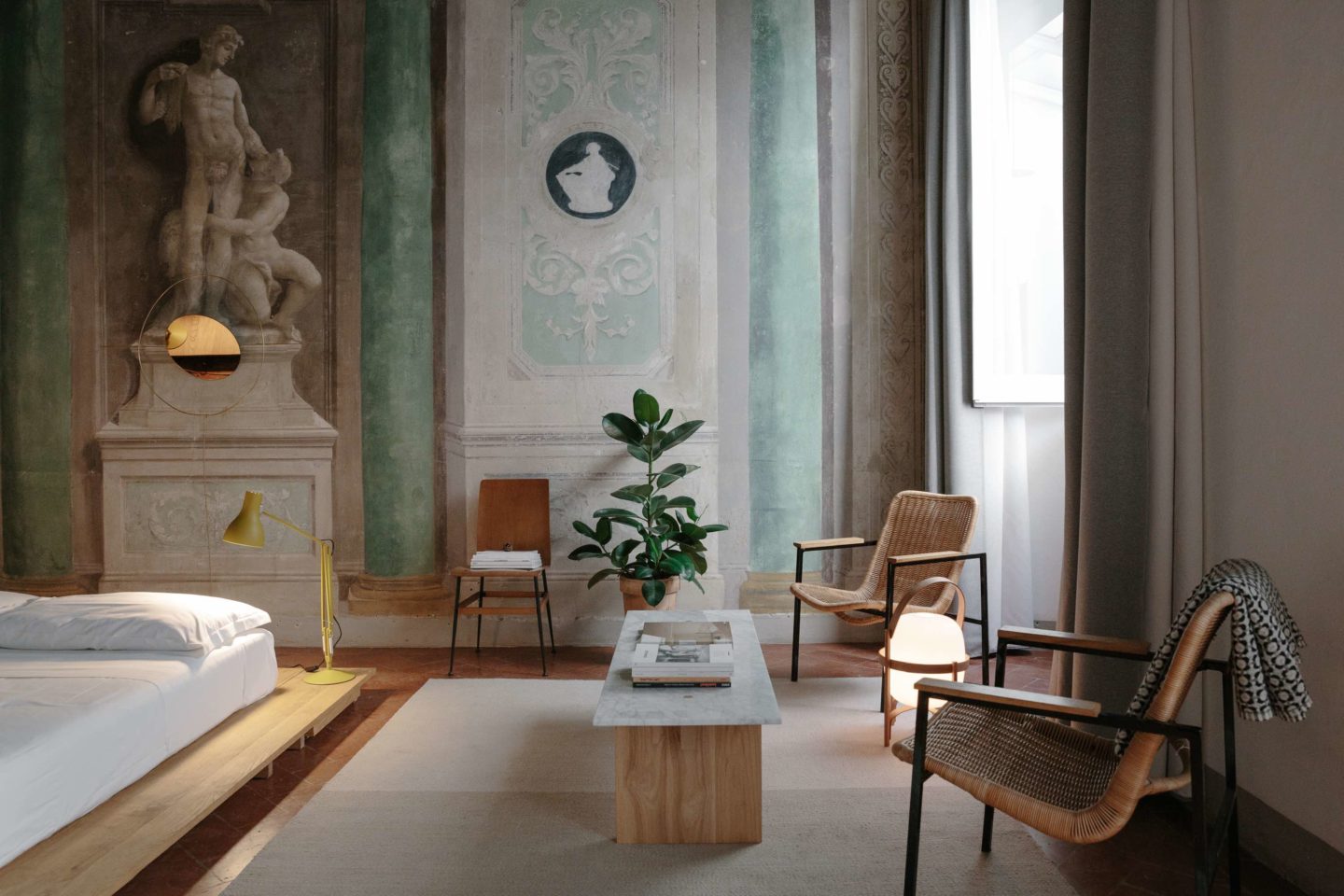
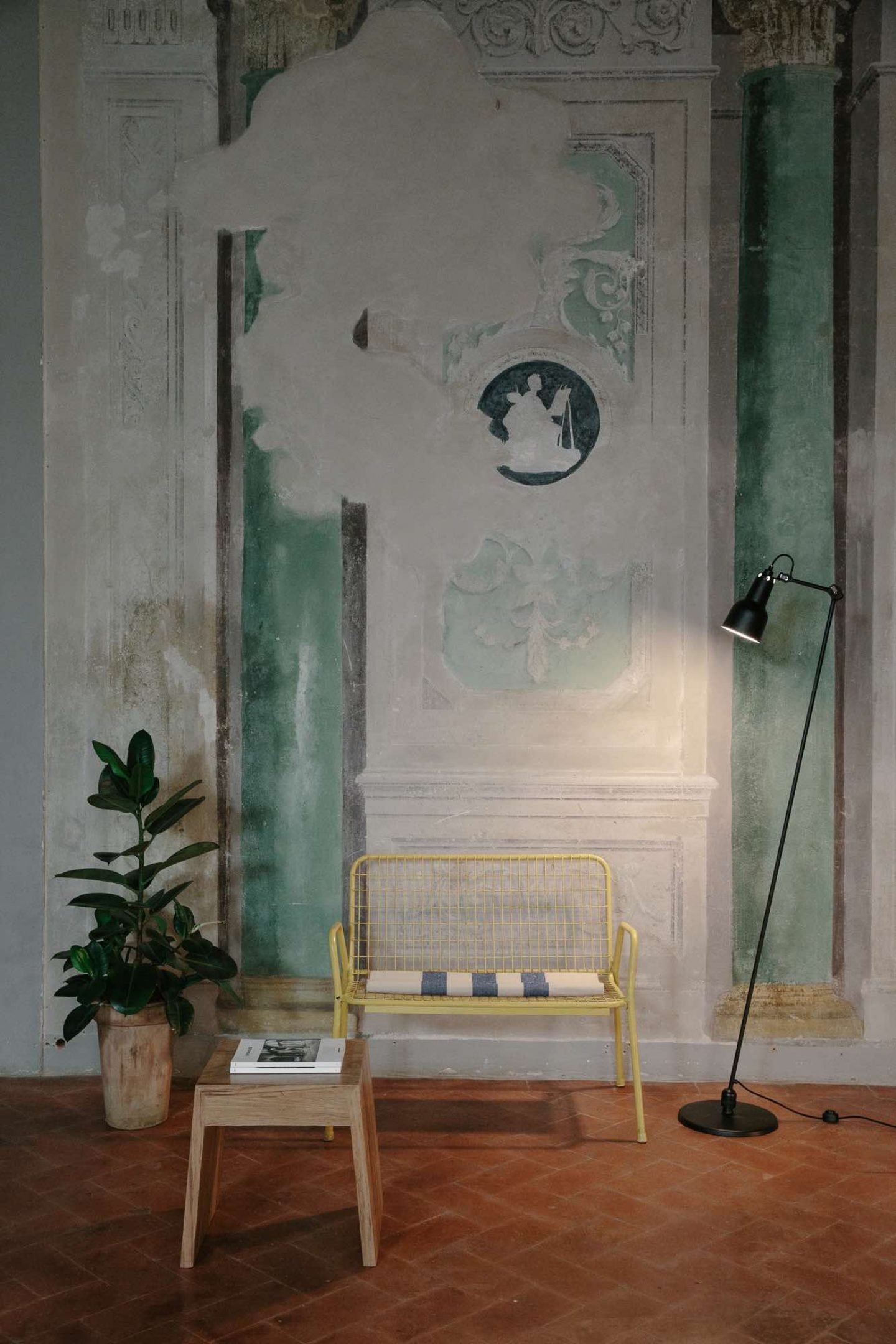
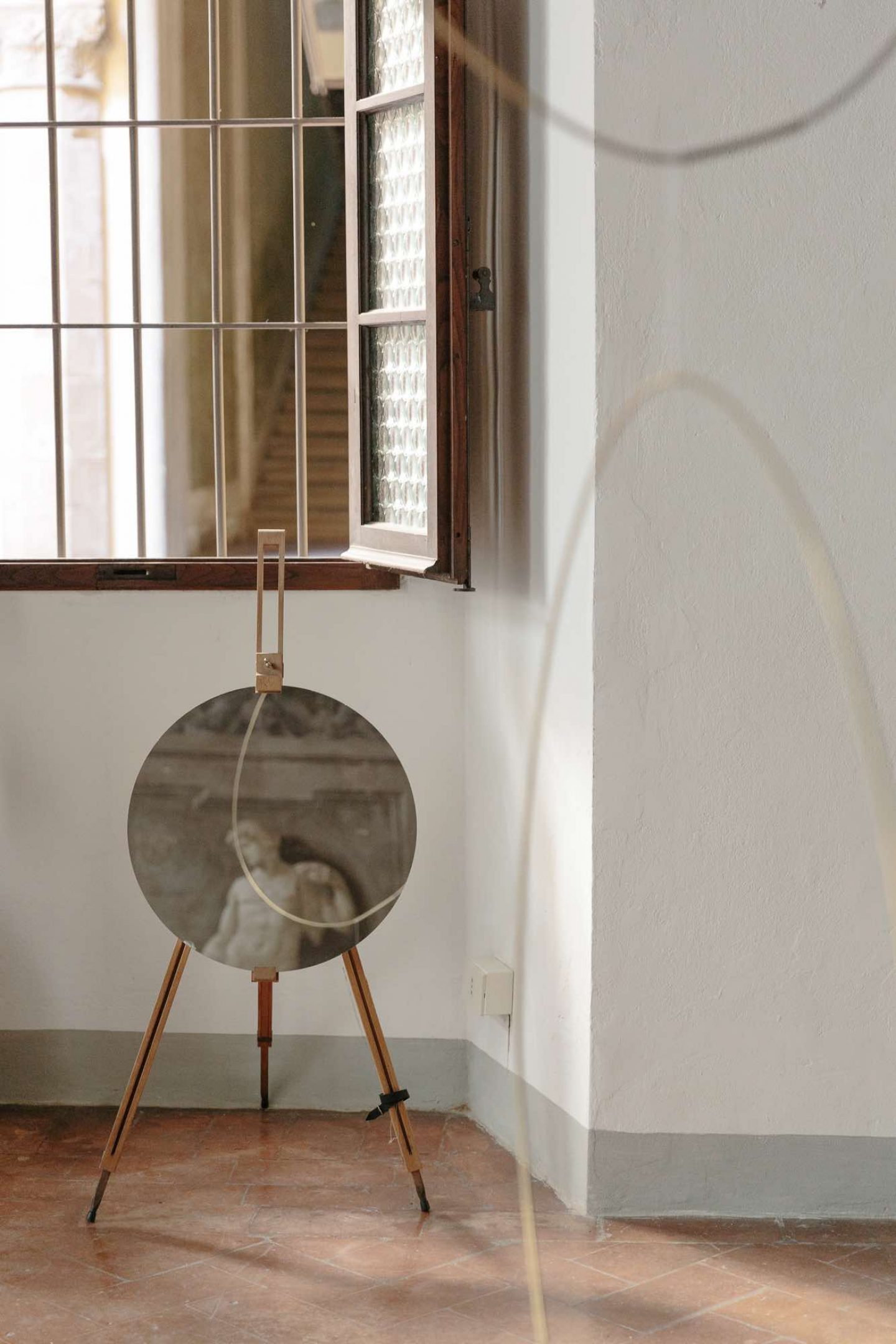
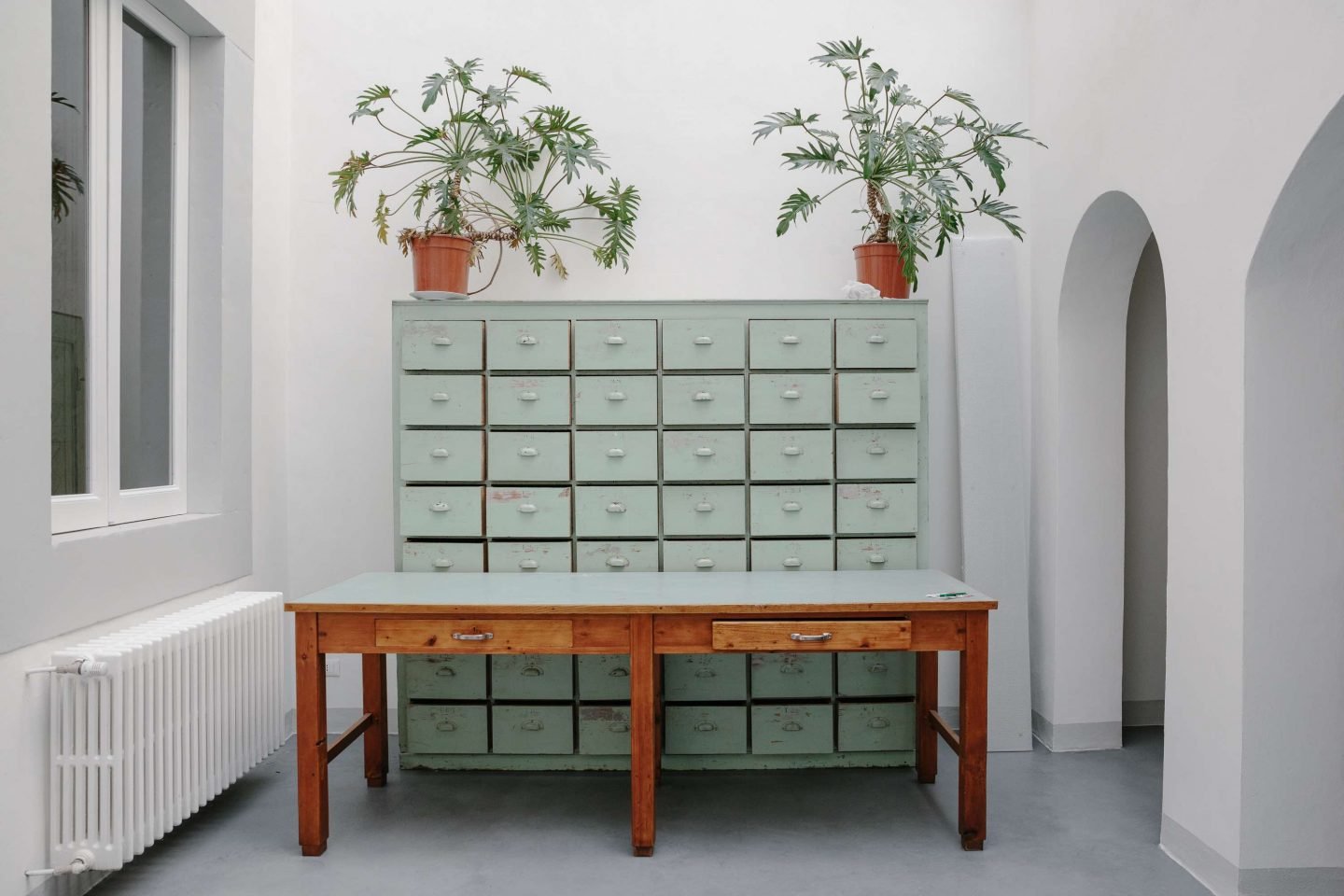
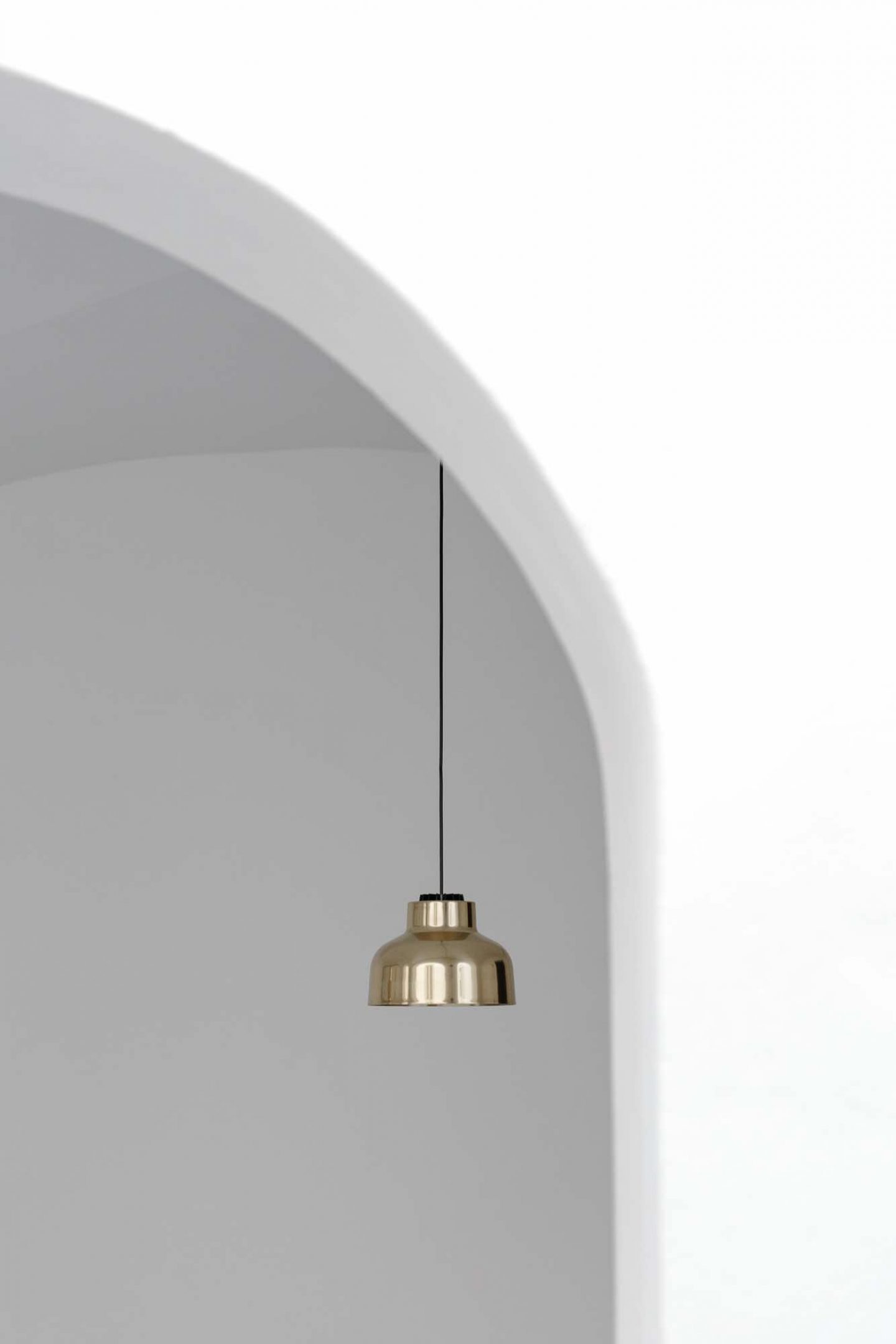
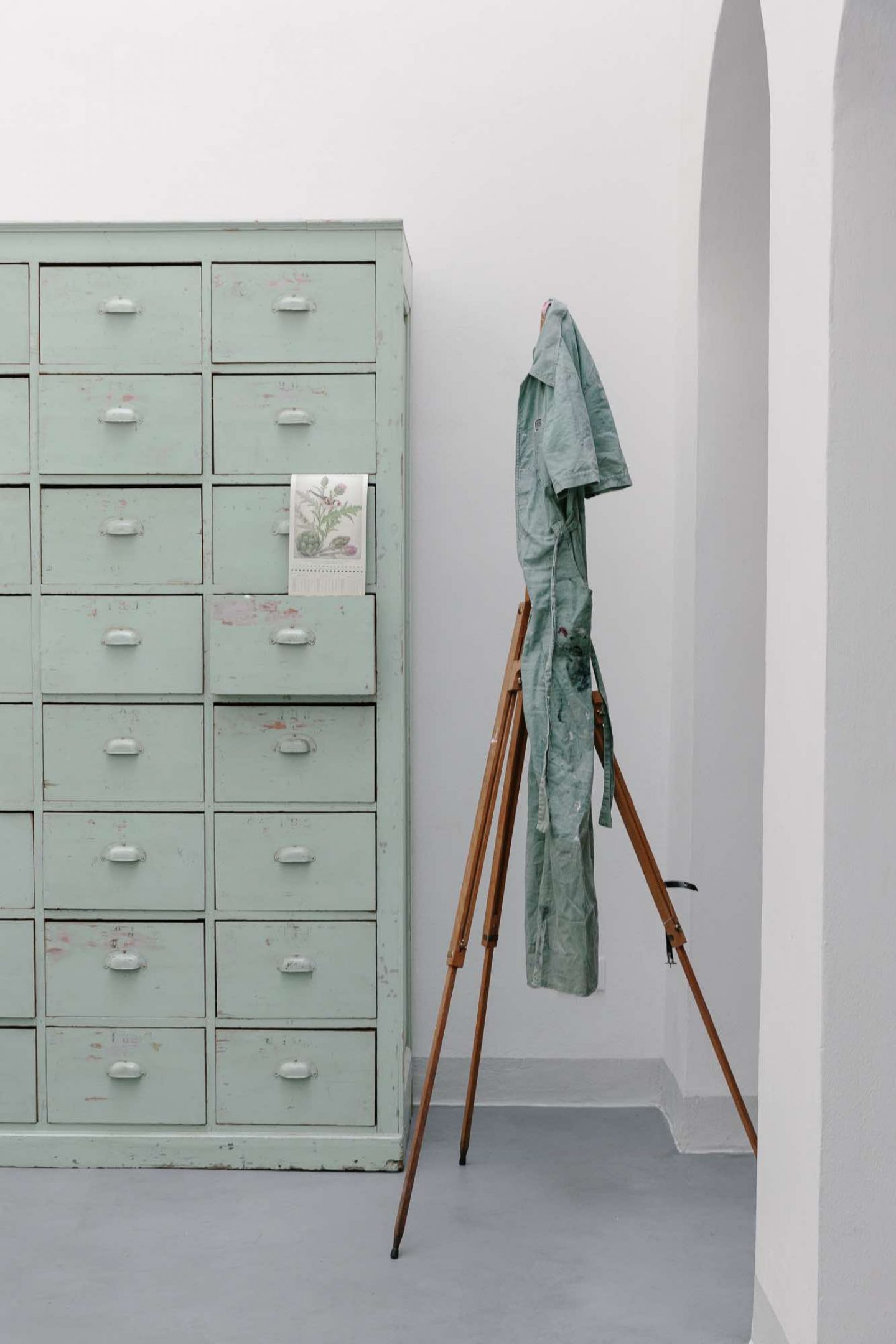
Images © Marina Denisova
"The place is conceived as a retreat but made for restless minds."
The contemporary creative community is characterized by a somewhat conflictive state of mind: We want to slow down, but be ahead of schedule; long for a retreat, but like to remain connected. Perhaps most importantly, we want a pretty place to call home but stay mobile. Do you personally identify with the so-called New Nomads?
I definitely need change to be creative. I actually had trouble passing University, because it made me feel stuck in a microcosm, with not enough stimulation. So I really struggled—up to the point where I asked myself if I was stupid. It took me some time to understand that my mind simply needs a lot of input to work well. Traveling and trying out things improves the quality of my work and in a way, Numeroventi supports some sort of nomadic mindset. It is obviously inspired by my own mode of working. And unlike many other co-working and co-living spaces, it is a decidedly temporary thing. You wouldn’t come here for two years, but rather for two weeks or perhaps two months. The place is conceived as a retreat but made for restless minds.
Can you give us a glimpse of a typical day at Numeroventi?
Well, whenever we have artists in residence here, we begin the day having breakfast together, usually around 8 or 9. Some would prefer to sleep a bit longer, but most of the time, the whole group comes together in the morning. We sit together, share ideas, and then work on different things until we have lunch. In a way, it’s all greatly inspired by Italian culture: Gathering at the table, eating and drinking together. I strongly believe that communicating with others makes the best source of inspiration. Once ideas are exchanged, new ones emerge. It also invites coincidence. The only meal we do not necessarily do as a group is dinner, but that’s mostly due to the fact that we’re in Florence: The food is simply amazing here, I’m still impressed myself sometimes. So people are happy to eat out in the evenings. But all in all, we spend a lot of time together. It’s a really friendly, almost family-like atmosphere. It sometimes feels like being part of a sect, but in a good way. And as that all sounds too much like a fairytale, I should add the whole thing wouldn’t be productive without deadlines, some sort of pressure, stress, and a bit of chaos, of course.
While well-ordered environments are expected to help us focus, chaotic ones are said to make our minds more malleable—that is: creative. What’s your personal take on creative chaos and order?
I’m not a tidy person at all, but working in a community, you obviously need to be a bit more organized. This is an open, multipurpose place, we are having photo shooting, exhibitions etc. Working under such busy conditions is not always easy. People are not always easy. There are different egos that occasionally clash. In general, however, our guests tend to be very careful, respectful, and considerate to not get into each others way. And sometimes, when somebody’s things lie around, they are picked up by somebody else and become starting points for new projects. So all in all, a bit of chaos works pretty well for me. As mentioned before, I also love switching from one task to another, working on a couple of projects at a time, which makes a large part of my job here.
Besides hosting artists, designers, and exhibitions, Numeroventi houses guest apartments, a photography studio, a co-working office, and two communal kitchens. Only recently, you added a screening room that you call your concert hall, due to its good acoustics. How do you do to keep the space flexible?
Its probably mostly a matter of keeping our minds open and observe, of trying things out, and deciding what works and what doesn’t. Hosting individuals who work in a variety of creative disciplines, we are constantly discovering new possibilities and potential uses for the space. You could even say that it keeps itself flexible, through the people that live and work here. That’s a really important aspect, actually: Every individual is both, a guest, and a co-creator, who influences and informs the space. All artists are taking something from the place, but they also give something back to it, be it in a literal sense, as in leaving an object here—or because we learn something from them. If an artist has very particular needs, it often turns out that adapting the space accordingly is an advantage for the whole project. Having hosted a director for two months, we needed to have this screening room, for example, which is now also used as a living room. Sometimes, when we have bigger events, we rent the top floor of the building. It features two terraces, which are also perfect for painting. Our five lofts are combined living and workspaces, and as we keep repurposing rooms, functional, modular furniture is important, too. Sometimes, you only have to move things around to understand that there is still a lot of untapped potential.
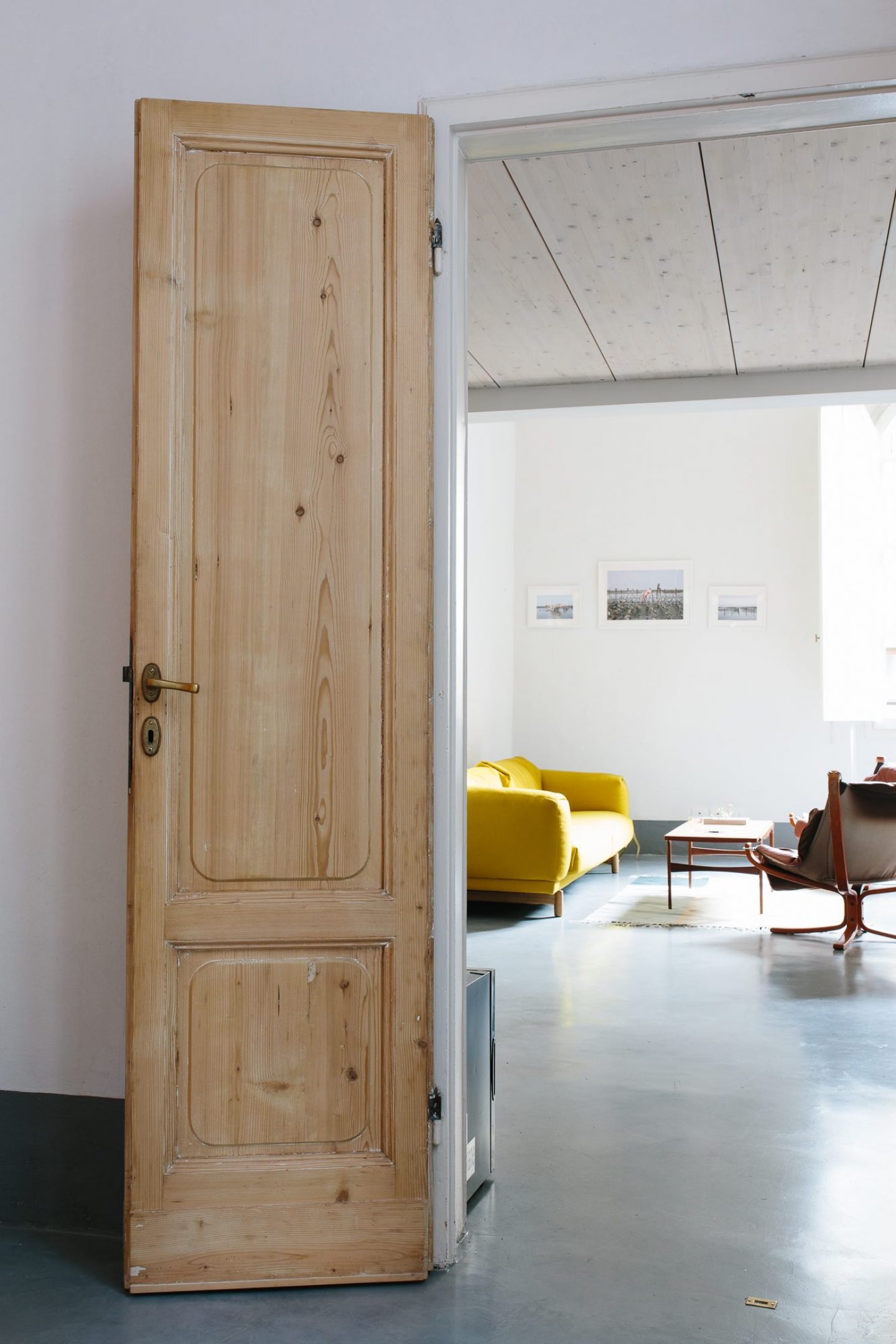
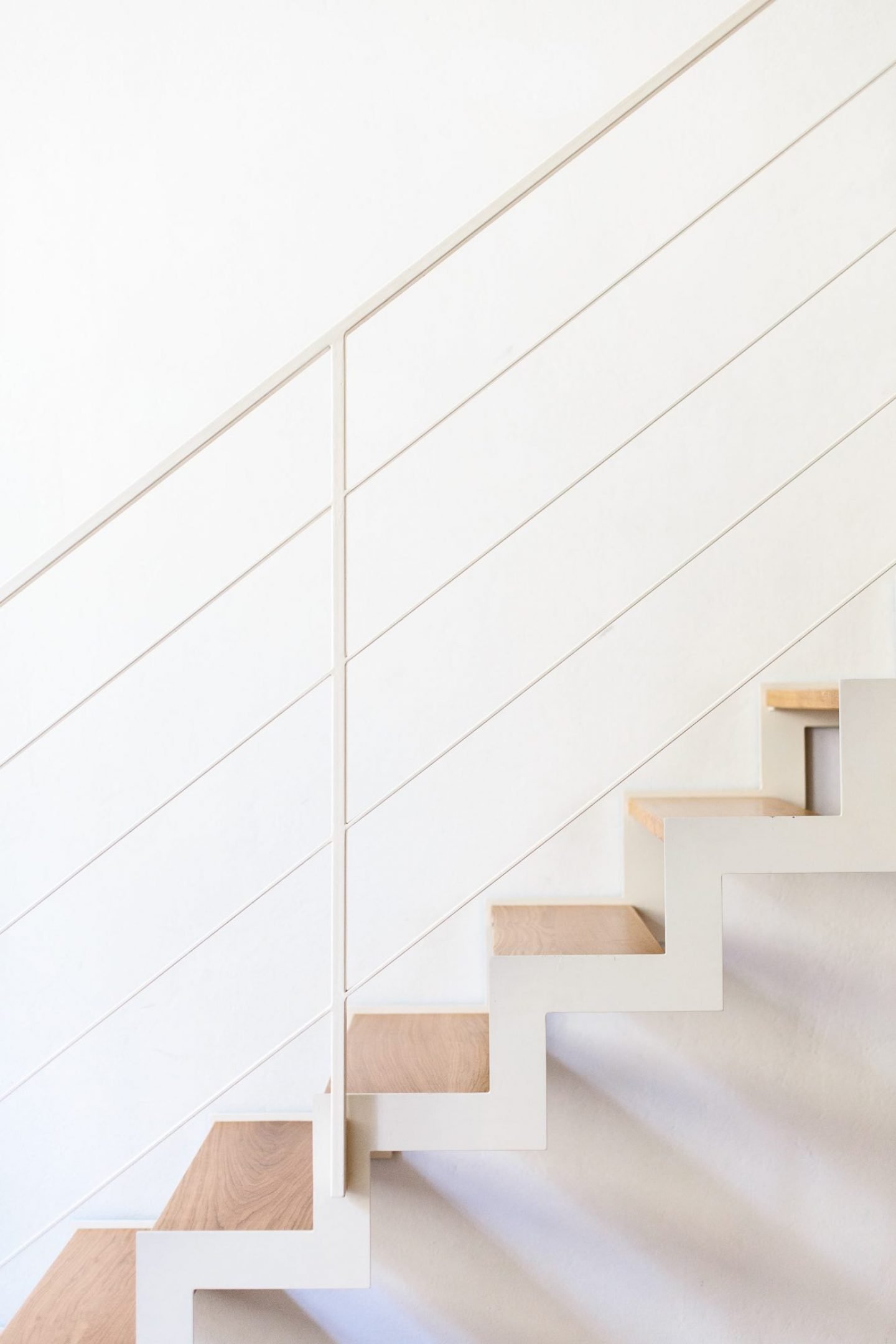
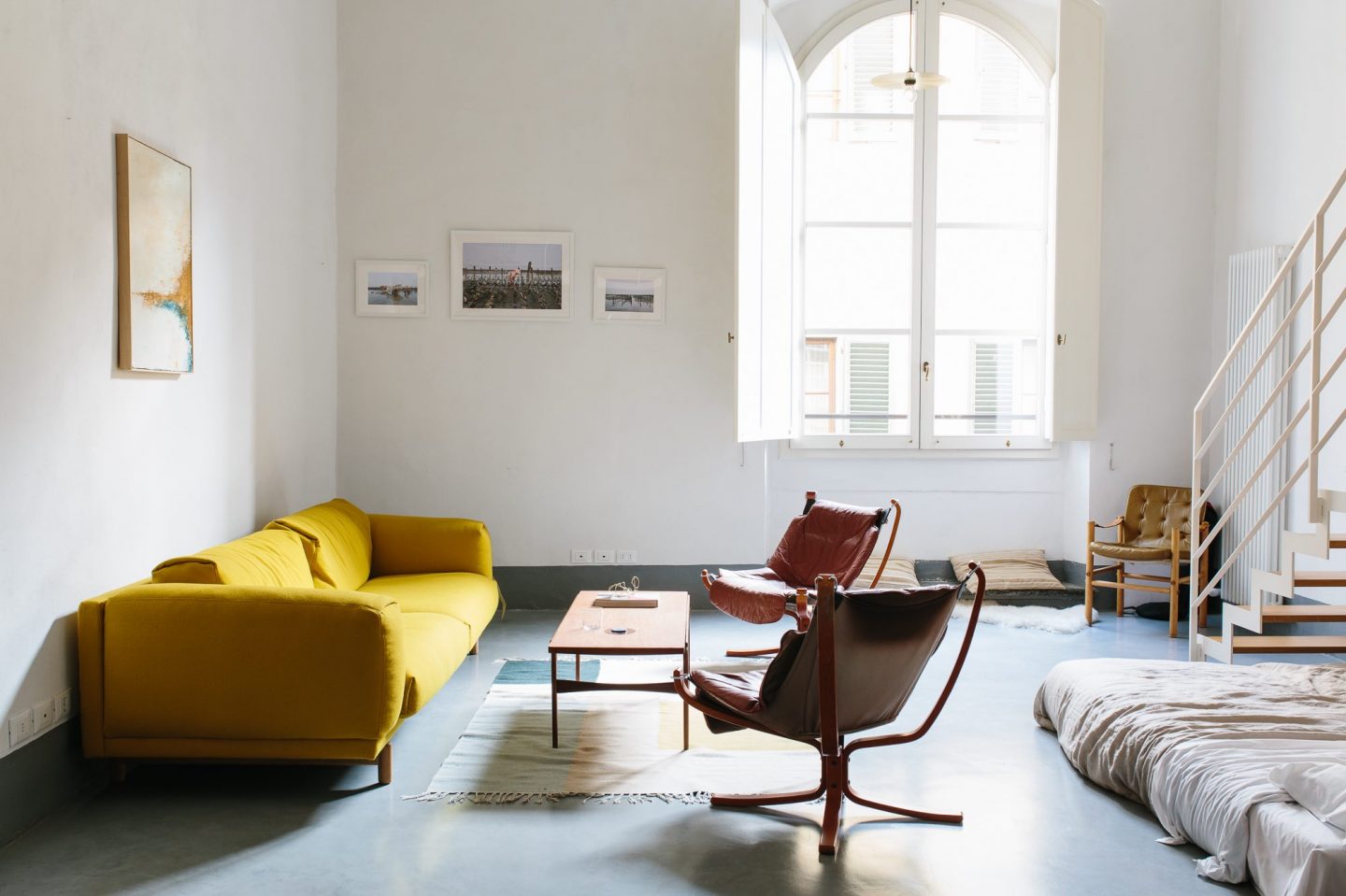
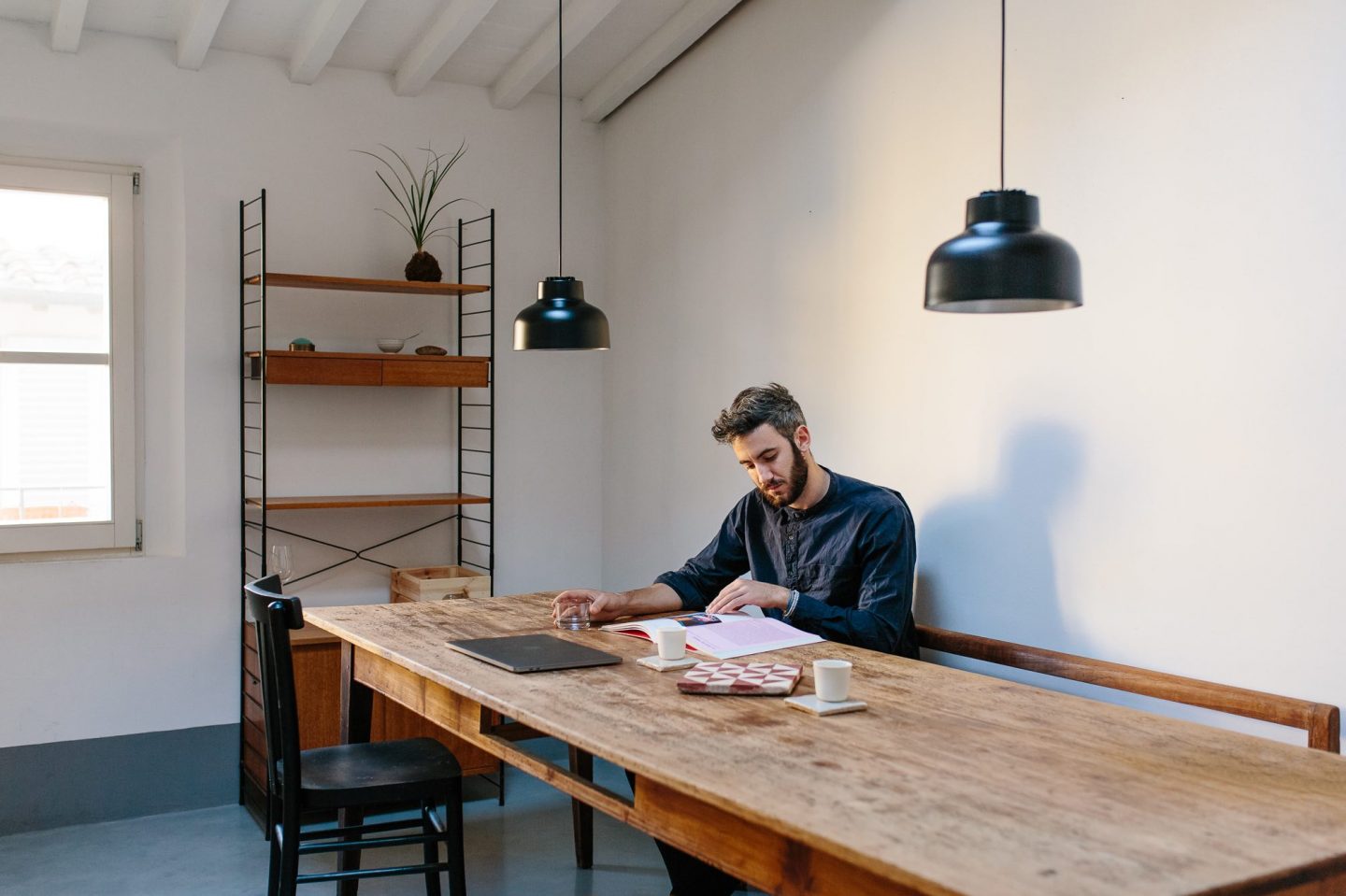
Images © Birgitte Brøndsted for iGNANT Production
Is creating a space for hosting guests different from furnishing a home?
For me personally, it is not and perhaps that’s the point: Numeroventi is conceived as a home to be shared with others. Nothing here has been created for a client, or a certain target group, only according to our own taste and aesthetics. When there are no artist residencies, we’re renting out rooms on Airbnb, which is also a means to make the project financially sustainable. But even though we have all sorts of people coming, they usually seek something else than the regular hotel. Hotels are hotels, but a home is a home, be it temporary or not. I have actually lived in all our lofts and apartments myself. As I told you before, I love the change of scenery, but I also did it because I felt it was the best way to understand what is needed. Basically, I moved into each apartment when it was still completely empty and furnished it while living there.
"Shelving systems play a functional part in daily life, so we develop some sort relationship to them."
What things do you need to feel at home?
I love magazines and having them around me, so publications like Cereal, Kinfolk, Monocle, and Open House pile up here, everywhere. Much like books, they also make a room a lot more livable and interesting. They tell a lot about our lives, ideas, interests, ideologies. Shelves are special, too, in that respect. They have these two sides to them, one is emotional, the other practical, and if you will, they can even be allocated to different sections: In the upper area, you place things that you either really love—or at least love to look at, like souvenirs, books, or plants. The lower part is usually reserved for stuff that you need at hand. Shelving systems play a functional part in daily life, so we develop some sort relationship to them. The one I have with my Tylko is a bit ambivalent because I’m always slightly concerned about it being too messy. Then again, it certainly says a lot about me, as a person. Holding a variety of pieces I’ve collected during my travels, it shows what I have done and where I have been—or, in the lower section, what I am currently doing. Thinking about it that way, the modular shelving system in our co-working space also appears to mirror the dynamics of the space as a whole: Some areas are private, others are communal. Some are messy, others tidy. Structures are constantly shifting. And with guests coming and going, its inventory changes, too.
To stay with the metaphor, can you give a brief outlook on Numeroventi’s top drawer projects?
We are just about to start the new residency programs, which will be followed by our biannual flagship event, called Eleven Spaces. The participating artists and designers will be arriving tomorrow. Then we all live and work here for ten days, and on the eleventh, put a contemporary exhibition together. And of course, there are always other, “off-the-shelf” things coming up.
Text by Anna Sinofzik. This interview was edited and condensed.
